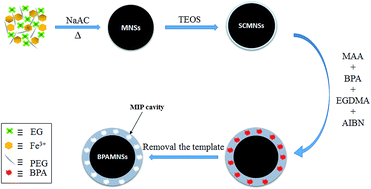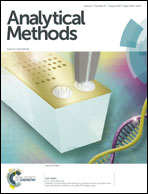Solid phase extraction and spectrofluorometric determination of leached bisphenol A from some polycarbonate products under simulated use conditions using surface molecularly imprinted magnetite nanospheres
Abstract
This work reports on the synthesis of a novel magnetic nanoadsorbent for solid phase extraction of leached bisphenol A (BPA) from some polycarbonate products. In order to improve the adsorbent selectivity toward the analyte, the adsorbent was coated with a layer of the BPA imprinted polymer. The prepared adsorbent has been fully characterized using Fourier transform infrared spectrometry, X-ray diffraction and transmission electron microscopy. The results showed that, after carful optimization of various affecting factors on the removal and desorption of BPA, the analyte can be determined in the concentration range of 5.0–1000.0 ng mL−1 with a detection limit as low as 1.5 ng mL−1 by using the spectrofluorometric method. The results of the real sample analysis showed that the investigated samples release detectable and considerable amounts of BPA into water under simulated use conditions confirming the previous concerns about dangers of polycarbonate product usage in daily human life.


 Please wait while we load your content...
Please wait while we load your content...